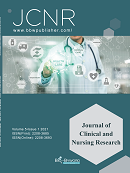The Causes of Individual Differences in Autism Spectrum Disorder
Abstract
Autism spectrum disorder (ASD) is characterized by various symptoms including impaired social interactions, unusually repetitive behaviors, and highly restricted interests etc. People with ASD differ significantly on their clinical profiles and the causes of such individual differences are not yet fully understood. The present paper provides an overview of the causes of individual differences in ASD from three different perspectives: genetic, environmental, and neurobiological perspectives. The present paper also describes one study design in detail within each perspective (i.e., classical twin design, epidemiological case-control design, and magnetic resonance imaging), and explains how each study design is informative about the causes of ASD.
References
Wolff JJ, Gu H, Gerig G, et al., 2012, Differences in White Matter Fiber Tract Development Present from 6 to 24 Months in Infants with Autism. The American Journal of Psychiatry, 169(2): 589–600.
Lord C, Brugha TS, Charman T, et al., 2020, Autism Spectrum Disorder. Nature Reviews, Disease Primers, 6(1): 5.
Langen M, Bos D, Noordermeer SD, et al. 2014, Changes in the Development of Striatum are Involved in Repetitive Behavior in Autism. Biological Psychiatry, 76(5): 405–411.
Ronald A, Hoekstra RA, 2011, Autism Spectrum Disorders and Autistic Traits: A Decade of New Twin Studies. American Journal of Medical Genetics, 156B(3): 255–274.
Colvert E, Tick B, McEwen F, et al., 2015, Heritability of Autism Spectrum Disorder in a UK Population-Based Twin Sample. JAMA Psychiatry, 72(5): 415–423.
Tick B, Bolton P, Happé F, et al., 2016, Heritability of Autism Spectrum Disorders: A Meta-Analysis of Twin Studies. Journal of Child Psychology and Psychiatry, and Allied Disciplines, 57(5): 585–595.
Folstein S, Rutter M, 1977, Genetic Influences and Infantile Autism. Nature, 265(5596): 726–728.
Rosenberg RE, Law JK, Yenokyan G, et al., 2009, Characteristics and Concordance of Autism Spectrum Disorders Among 277 Twin Pairs. Archives of Pediatrics & Adolescent Medicine, 163(10): 907–914.
Sandin S, Lichtenstein P, Kuja-Halkola R, et al., 2017, The Heritability of Autism Spectrum Disorder. JAMA, 318(12): 1182–1184.
Sandin S, Lichtenstein P, Kuja-Halkola R, et al., 2014, The Familial Risk of Autism. JAMA, 311(17): 1770–1777.
Lewallen S, Courtright P, 1998, Epidemiology in Practice: Case-Control Studies. Community Eye Health, 11(28): 57–58.
Buka SL, Rosenthal SR, Lacy ME, 2017, Epidemiological Study Designs: Traditional and Novel Approaches to Advance Life Course Health Development Research. Handbook of Life Course Health Development, 541–560.
Connolly N, Anixt J, Manning P, et al., 2016, Maternal Metabolic Risk Factors for Autism Spectrum Disorder-An Analysis of Electronic Medical Records and Linked Birth Data. Autism Research: Official Journal of the International Society for Autism Research, 9(8): 829–837.
Frans EM, Sandin S, Reichenberg A, et al., 2013, Autism Risk Across Generations: A Population-Based Study of Advancing Grandpaternal and Paternal Age. JAMA Psychiatry, 70(5): 516–521.
MRI Scan, Available: https://www.nhs.uk/conditions/mri-scan/.
Uddin LQ, Dajani DR, Voorhies W, et al., 2017, Progress and Roadblocks in the Search for Brain-based Biomarkers of Autism and Attention-Deficit/Hyperactivity Disorder. Translational Psychiatry, 7(8): e1218-2017.


